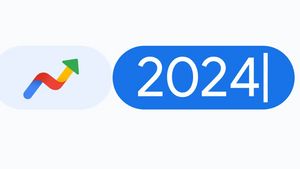JAKARTA Cryptocurrencies or cryptocurrencies have experienced increased popularity as digital assets and alternative monetary systems today. The skyrocketing prices of a number of cryptocurrencies such as Bitcoin (BTC), Ethereum (ETH), Ripple (XRP), Dogecoin (DOGE) and others have benefited investors. However, this also invites the entry of financial criminals into the crypto industry. Therefore, the importance of how to find out crypto scams or rugby pulls.
Every day new crypto coins or tokens appear. The crypto community, which often hunts for potential cryptocurrencies because they have just been launched, must be careful. Because not a few are trapped in scam and rugby projects like last year's Squid Token case.
Scammers or scammers arise with more sophisticated schemes to take advantage of those who are less experienced, including doing price manipulation. They also often do a number of ways to trick users through what is commonly known as rug pull,' a scheme in which scammers create new coins and promote them aggressively, relying on false or excessive claims to get investors' funds away.
To find out which crypto scam or not, it's a good idea for crypto enthusiasts to do research first by looking at a number of important factors related to the targeted crypto token. VOI.id will present important points that will help you avoid scamming crypto coins or tokens and rugby pull, as described below!
How to Know Tokens Crypto Scam and Rug Pull
1. Check Whitepaper
Whitepapers are usually compiled by developers and contain explanations and objectives related to crypto projects. In this white paper, developers also describe tokenomics, business models, and a number of other important aspects. Serious crypto projects tend to have complete data and research results to realize their vision.
Therefore, you must be skeptical if you find a crypto project white paper that is mediocre or designed carelessly and does not fully explain the usefulness or utility of the token and the vision of the developer. To view the Whitepaper, you can go to the official website or through the CoinMarketCap or Coinecko page. Usually under the coin/token name there is the words "whitepaper" that can be clicked by the user.
2. Know the Developer Team
Another factor to see if a crypto scam project or not, you can find out who the development team and important people in the project are. It doesn't stop there, you also have to have more detail checking their professional identities and backgrounds, as well as their position on the project.
3. Partnership
Usually a number of crypto projects often include various names of venture capital companies (VCs) and media as well as crypto exchanges on their official websites. Don't stop there, you also have to know whether the listed company's names really have a correlation or not. The reason is, this shows the important credibility of a crypto project. After all, to establish partnerships with VCs or crypto media it will take a long time.
4. Pay attention to the Roadmap
The crypto project has a roadmap to measure what they have accomplished and what they will achieve in the next few months or years. The developer explains simply in the roadmap related to the project and its long-term strategy. However, if the crypto project has no roadmap or roadmap is unrealistic, the possibility is a scam project. The reason is, this roadmap or roadmap reflects an important summary in the whitepaper.
5. Liquidity
Check token lists. If traded on very few centralized crypto exchanges (CEX) or decentralized crypto exchanges (DEX), there's a good chance it's a scam.
Finding out how much liquidity is behind tokens is equally important. In DeFi as in traditional finance, liquidity is the total value of the assets available for trading in certain markets, or pools. Low liquidity usually means a new crypto project launched or very little use.
DEXTools is a very good site to know how liquid a decentralized exchange trading pool is. Users can filter token searches based on blockchain and exchanges. Meanwhile, finding out the volume of transactions and the number of active addresses interacting with project smart contracts will also provide valuable information for speculators.
6. Check the Official Website
Bad websites that look like they are made of templates and look amateur are bad signs. A useful tip is to look for domains in whois. Some jurisdictions are generally known as hosting fraudulent websites.
If the site looks good at first sight, reviewing external links to sites containing project-related content, such as blogs, will reveal valuable information. Damaged links or poor and obsolete external content can tell us how much the team's concern for the project's long-term plans is.
False references such as mentioning that the project has included related content on sites such as Crypto Briefing, Yahoo Finance, Cointelegraph, or CNBC, which it does not, are clearly not a good sign. false or excessive statements and testimonies should also raise suspicions.
7. Observe Social Media Activities
If users on social media complain about the wrong token or protocol aspect and the team is not responsive or unclear about the claims, tag them off of the project. Reading forums like Reddit or Twitter is the best way to find the sentiment of the entire project community.
That's how to easily find out whether crypto scams and rugby pull or not. This is intended so that you avoid material and moral losses because you play crypto without doing research or DYOR (Do Your Own Research) first. Hopefully it will be useful!
The English, Chinese, Japanese, Arabic, and French versions are automatically generated by the AI. So there may still be inaccuracies in translating, please always see Indonesian as our main language. (system supported by DigitalSiber.id)













